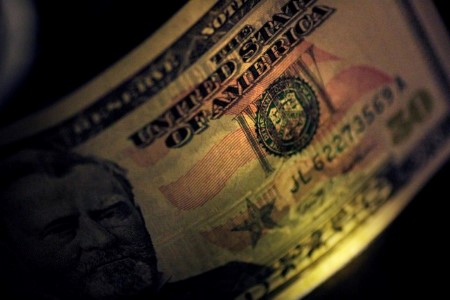




Quarterly Economic Growth Release: More BSP cuts to come
 DOWNLOAD
DOWNLOAD

Monthly Economic Update: Fed catches up
 DOWNLOAD
DOWNLOAD

Inflation Update: Steady and mellow
 DOWNLOAD
DOWNLOAD


Trump’s gains supercharge higher-for-longer trade

WASHINGTON – A disastrous debate performance by US President Joe Biden has investors increasingly pricing in the likelihood of his Republican rival Donald Trump winning the US election in November.
The yield on 10-year US Treasury bonds has risen from less than 4.3% to more than 4.4% following last week’s debate, in a nod towards the former president’s probably inflationary plans for tax cuts, tariffs, and monetary policy. Investors were already expecting a steeper yield curve as the Federal Reserve battles with persistent inflation concerns. A Trump surge in the polls would add to those bets.
Biden’s declining chances of re-election come as money managers are already reconsidering the probable path of interest rates, inflation, and economic growth. The Fed likely has reached the end of its rate-tightening cycle, with most investors penciling in one or two interest rate cuts before the end of 2024, according to CME Group.
Longer-term inflation expectations in the United States have also risen to around 3%, compared to usual readings of around 2.5% prior to the pandemic, owing to a variety of factors including supply chain changes and demographic pressures. Trump’s proclivity for trade wars and tax cuts, both of which can provide upward pressure on prices, would add fuel to those fires, leading to higher long-term interest rates and Treasury yields.
Yet the market reaction remains somewhat muted: The yield on 10-year Treasury bonds is still lower than on three-month government debt. That’s because investors face several areas of uncertainty. While opinion polls show the former reality TV show host with an advantage, his return to the White House is not a foregone conclusion — especially with the wild card of Biden’s possible withdrawal from the race.
Even if Trump’s position continues to improve, his ability to push through policies will depend in part on the balance of power in Congress after the election. If Democrats have any say in the drafting of a new tax policy when Trump’s signature 2017 law expires in 2025, it will look significantly different than if Republicans control both the House of Representatives and the Senate.
A second Trump administration’s policy direction will also depend on the personnel he appoints. His first term was a tug of war between traditional Republicans who focused on deregulation and tax policy and populists more interested in stoking trade wars, bringing manufacturing onshore, and restricting immigration. As the direction, and likelihood, of a second Trump term becomes clearer, investors will keep watching the yield curve.
CONTEXT NEWS
Long-term US government bond yields rose in the wake of the June 27 US presidential debate. The yield on the benchmark 10-year US Treasury note settled at 4.435% on July 3, up from 4.287% prior to the debate.
(Editing by Peter Thal Larsen, Pranav Kiran, and Sharon Lam)
This article originally appeared on reuters.com





 By Reuters
By Reuters